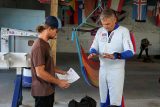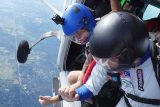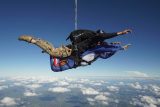You Want to Become an Instructor-Examiner … Now What?
Instructor Examiner Course
Posted by: Skydive Ratings
8 years ago
In the October issue of USPA’s magazine “Parachutist” is an article by us, about what it takes to become an Instructor-Examiner:
So, you have been an Instructor for quite some time, have all of this knowledge and experience, and would like to pass it on to the new generation of coaches and instructors. Congratulations! You are now ready to advance to the sport’s university level by achieving USPA’s highest instructional rating, the examiner rating (coach examiner or instructor examiner).
Of all rating courses, examiner courses are the ones that jumpers are most confused about. Many believe that taking an Instructor Examiner Rating Course alone will make someone an examiner. The truth is, it is just one of the many requirements.
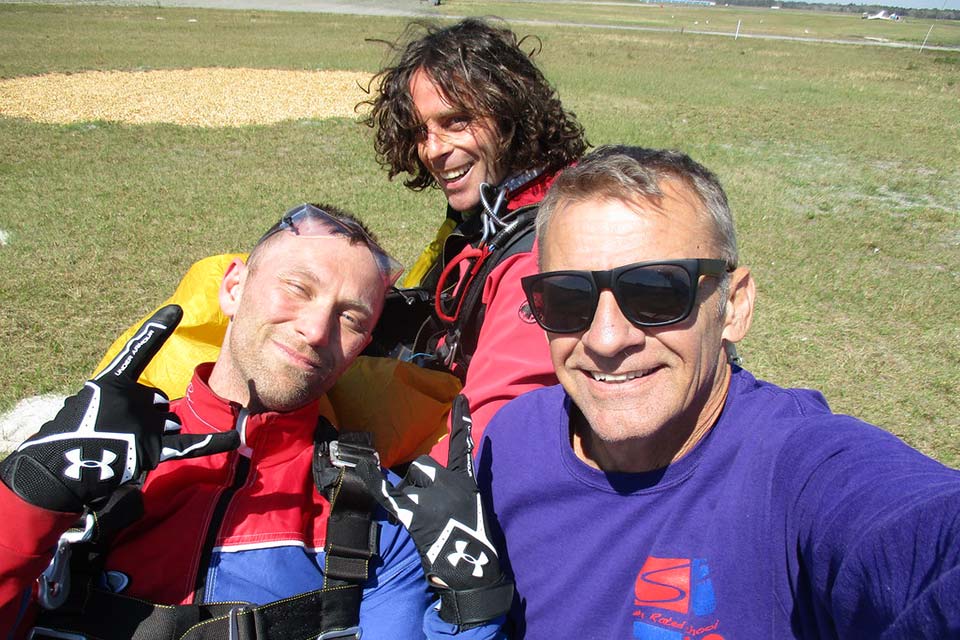
It Starts With the IRM
USPA’s Instructional Rating Manual is the most obvious source of information for finding out everything about instructional ratings. The last chapter in the IRM contains the outline for the CE/IE course, which includes information about rating requirements. The instructor examiner section on the first page of the course outline and the CE/IE Proficiency Card spell out the exact requirements for each examiner discipline.
The documents that you are going to need to become an examiner are the CE/IE Rating Course Proficiency Card and the Evaluation Jump Verification List. The proficiency card serves as the usual rating-requirement-sign-off card. The evaluation jump tracking form-where the applicant lists all of the course evaluation jumps he makes-is new. When completed, both documents serve as the rating application.
The Bare Necessities:
- The examiner applicant needs to make between 100 and 500 student training jumps in the instructional method the rating is sought in. The CE/IE Proficiency Card lists the exact number of student training jump required to receive a USPA Coach Examiner or AFF, IAD/Static Line or Tandem Instructor Examiner Rating.
- A coach examiner applicant must teach 15 solo first-jump classes, and all instructor examiner applicants must teach 50 solo first-jump classes.
- Each examiner applicant needs to take a USPA CE or IE Rating Course.
- The CE/IE applicant needs to have experience in assisting with rating courses, and each instructional method requires an applicant to make a certain number of instructional course evaluation jumps. The candidate needs to track these jumps on the Evaluation Jump Verification List and have each one signed by a supervising examiner. USPA Coach Examiner candidates need to make 15 course evaluation jumps, USPA Tandem Examiner candidates need to make 25, and all other USPA Instructor Examiner Rating candidates need 50.
- Each USPA Tandem Examiner applicant must hold a tandem examiner rating through the tandem manufacturer of the type of equipment used.
- Finally, each examiner applicant needs to teach and manage a rating course under direct supervision of a current examiner, which includes being responsible for all portions of the course, including administration. When satisfactory, the examiner provides the final signature on the candidate’s proficiency card.
The IE Course
Taking the Instructor Examiner Rating Course is a general requirement for each examiner applicant. The IE course is a three-day course and covers advanced teaching methods. The course touches on the psychology of learning, ways to enhance memory, the difference between subjective and objective evaluations, and how to make presenting your lesson plans more dynamic. You will be challenged to become a better teacher. There are no jumps in the course. Instead, it focuses solely on teaching, evaluating and being a facilitator for your IE course candidates.
Each candidate prepares three lesson plans. Two topics are from the instructional rating course for the method you want to become examiner in, and one topic is non-skydiving related. The candidates need to perform at examiner level, follow the teaching principles and strategies from the IRM and present a dynamic lesson in which they strive to avoid lecture and instead have their students active and involved. It is eye opening to see how you can use the same teaching principles and strategies for non-skydiving topics.
The lesson presentations are the best portion of the course, and not just the ones you are teaching. Learning takes place in both directions. During this section, one candidate presents his lesson and the other candidates evaluate that performance. A huge part of the job of an examiner is judging and evaluating the candidates in your course. You will learn about the need for a set of measurable standards, how to generate positive feedback throughout, the difference between objective and subjective evaluations, the need to be fair and to the point, and how to communicate your evaluations in a way that candidates will accept. These are all practical skills that IEs use on a daily basis.
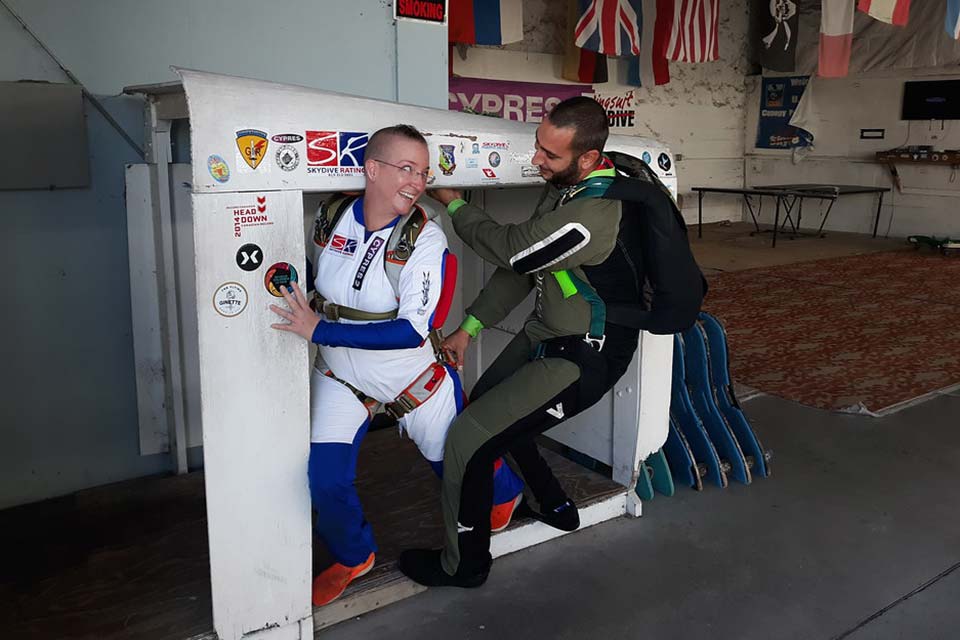
After the Course
Once you have taken the IE course and completed all the student jumps and student training, you will be ready to get involved in instructional rating courses to get experience performing course evaluations, which is a prerequisite for receiving the IE rating. You’ll need to perform between 15 and 50 candidate evaluation jumps (depending on the instructional rating method you want to become an examiner in) Finally, after you successfully teach and manage an entire rating course, the supervising IE will provide your final signature.
Compare the process of becoming an examiner with the process of becoming a rigger: To become a certified rigger, you can do 20 repacks under supervision of your local rigger and as soon as you reach number 20, find a rigger examiner to sign you off. Then you can call yourself a rigger. Or you can go to a specific rigger course, take your time to learn to sew, work with different riggers, attend rigging seminars and become knowledgeable and comfortable with all aspects of rigging. At that point you are able to not only call yourself a rigger, but you will be a rigger.
The same is true of becoming an examiner. To truly become an examiner, attend a quality school with a great learning environment. You want to worry about learning as much as you can. You want to focus on understanding the course material and on getting to know the ground evaluations. You want to learn how to judge air and ground evaluations by USPA standards. You want to worry about using good teaching techniques when you begin teaching a portion of a course under supervision. You want to worry about perfecting your lesson plans. If you allow yourself to be thorough in preparation and keep an open attitude toward learning, you will not have to worry about the number of evaluation jumps you need. They will be there in the end. If you do all this, you will be fully prepared to tackle the final part of the journey: teach and manage an entire course under direct supervision of an examiner.
Once You are Rated
Examiners must have many qualities, some of which are beyond what can be measured in a rating course but are just as important. First, an examiner needs to have a love for teaching. Sure, it is way cool to make AFF evaluation and practice jumps. That is the glorious side of the job. But the true quality of an examiner shows in his capacity to understand the skills necessary to pass the evaluations and the ability to teach those skills to the instructor course candidates. That requires insight, a thorough understanding of how people learn motor skills, a thorough understanding of the psychology of learning and great interpersonal skills.
Most of us know from experience that being over-challenged can cause frustration and may kill both the desire and ability to progress. Carefully judging the amount of challenge you put into a skydive, using positive reinforcement, properly conducting ground coaching … you’ll use these seemingly abstract ideas from the IE course in the most practical way all the time! And not only in your instructor or coach courses.
Maintaining safety-safety for students, safety for instructors, safety at the DZ, safety in and around the aircraft, and safety in the rating courses, for that matter-is another huge aspect of the job. Awareness, knowledge, maturity in the sport and as a person, good judgment and sincerity all ties in together and allows the IE to have a positive influence on the safety of student training and on the sport as a whole. Once you are an examiner you will always wear that hat. The job comes with a lot of responsibility. The IE often functions as a backup for the DZ’s Safety and Training Advisor.
Because you are teaching from the USPA IRM and SIM, you need to know these class materials inside and out. Know where you can find the information. Know which parts of the books are related. Really know what information the book provides. As a USPA Examiner, you certify candidates for a USPA rating, so you need to follow the USPA guidelines closely. It is not the examiner individually who sets the standards to earn an instructional rating; as an Examiner, you are to follow the standards set forth by USPA.
As a tandem examiner, you need to stay in contact with the manufacturer and respect and understand its position and the liability it undertakes in the tandem industry. The examiner is an extension of the manufacturer and has a responsibility toward it to present the correct information and follow its guidelines. The administrative side is important, and you must make sure to get the paperwork to the manufacturer in a timely manner.
An examiner needs to have extensive experience in and knowledge about his instructional discipline. Your course candidates will expect you to know what you are talking about. However, it is also important to keep an open mind toward learning. The moment you start thinking that you know it all or have seen it all, you will get stuck in your own rut. Never think that you have reached the finish line; learning takes place all the time, with every new course and with every new course candidate.
